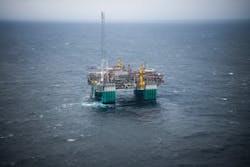Offshore staff
LONDON – Neptune Energy has implemented digitization at five operated platforms in the Dutch, Norwegian, and UK North Sea.
The program should allow around 90 site inspections per year to be conducted from shore, leading to gains in work schedules, lowered costs, and carbon emissions reductions that would have been associated with offshore travel by helicopter.
In partnership with Eserv the company created digital twins for the K9-A, L5-D and F3-B platforms in the Dutch sector, Gjøa in Norway, and Cygnus in the UK southern North Sea.
Engineers and integrity specialists, working with the platforms’ digital counterparts, should be able to deliver an estimated 4,100 hours of work from onshore locations.
Pete Jones, Neptune Energy’s vice president Operations Europe, said: “The technology is continuing to evolve to the point that onshore teams will be able to visit the platforms virtually, and ensure operations are running safely, smoothly, and efficiently from anywhere in the world.
“They will be able to plan work, inspect plant equipment and monitor changes in the physical structure, or identify potential issues early and accurately. This is especially important given the need to reduce the number of individuals on offshore platforms during the COVID-19 pandemic.”
For the older Dutch sector facilities, digitizing the platforms is said to have provided technicians with dimensional data accurate to 1 mm. Previously they would have had had to work with older, paper-based technical documents when planning activities.
Neptune also views digitization as an opportunity to cut the time associated with oil and gas exploration, and to provide its employees with tools and technologies to collaborate with colleagues globally.
06/02/2021



